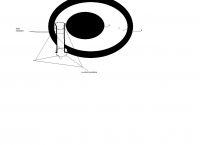Colleagues have probably read and know the concept of an autonomous house.
Link
Link
Czy wolisz polską wersję strony elektroda?
Nie, dziękuję Przekieruj mnie tamQuote:Since electricity is expensive, the first step to saving it should be to adjust your lifestyle and home design to reduce energy requirements. Fluorescent lighting (fluorescent lamps), laptops and gas absorption coolers save electricity and therefore money.
Quote:During periods of low electricity demand (e.g. at night), excess energy may be stored in accumulator batteries. Unfortunately, the batteries need to be replaced every few years because of their gradual wear. In many areas, it is possible to avoid the purchase of batteries by connecting the building to the power grid, which will allow surplus energy to be sold to the grid. Such a building will be less autonomous but cheaper, requiring less sacrifice on the part of the residents. At the same time, when selling overproduction of energy to the grid, there is no loss in battery efficiency, which saves more fossil fuels.
In areas with no access to the electricity grid, the capacity of the battery bank may be reduced when a generator is installed in the system to recharge the batteries during the period of insufficient electricity supply from the wind turbine and photovoltaic cells. Such generators can run on gasoline, diesel oil, larger devices also run on natural gas. One hour of charging the batteries is usually enough for a full day of energy use.
_jta_ wrote:The average energy consumption in Poland is about 700W per person - and a 1m2 panel will probably give an average of 25W, so a 28m2 of roof for panels is needed per person. The roofs of farm buildings in the countryside must be used, because the roofs of the houses themselves will not be enough, although, on the other hand, the village still lives more economically, maybe enough for them. In the city, for example, my building has a roof of 600 m2, and 400 people live in it, so the energy from the panels on the roof could cover several% of the demand; a further few% could be achieved by panels on the wall (unfortunately, a large part of it is covered by trees).
_jta_ wrote:I mean 700W per person, or 25 GW (gusts up to 30 GW) for the whole of Poland. We use so much. This is still not much compared to many other countries, e.g. from the USA.
RADASSS wrote:I wrote about 500 W on average for the whole house.
RADASSS wrote:For example: 172 kWh / year; 1 year = 365 days = 8,760 hours
172: 8760 = 19.63 Watts non-stop
Artur k. wrote:Whereas500W per day for the whole house
RADASSS wrote:No sir buddy, you still get stuck, I don't know what. When considering power, we ignore the time factor. If you can't understand it, it's hard. Ask, head a head, maybe something will flash. With energy and power, it is not so hopping despite your misconceptions.1/2 kW is just as much as the average I use non-stop in a large hut
RADASSS wrote:I wrote about 500 W on average for the whole house.
RADASSS wrote:So, according to me 1/2 kW, if it was available from inexpensive panels, it would be ok. At the peak I charge an order of magnitude more (for max 1 hour), but that's what the batteries are for.
Moderated By ANUBIS:3.1.9. Don't offend the other side of the discussion. Respect the dissenting opinion and other opinions in the forum.
RADASSS wrote:This is not an industry for audio professionals.
RADASSS wrote:So, according to me 1/2 kW, if it was available from inexpensive panels, it would be ok. At the peak I charge an order of magnitude more (for max 1 hour), but that's what the batteries are for.
atom1477 wrote:But the other energy cannot be counted much anymore.
atom1477 wrote:that at least 20% goes to transmission losses.
wnoto wrote:Example ?
wnoto wrote:Not more than 7-8% - data from probably 2 years ago. It should have been better since then.

